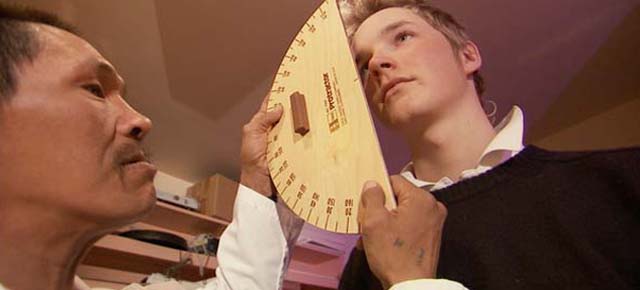
Filmmaker Q&A: Qallunaat! Why White People Are Funny
Filmmaker Q&A: Qallunaat! Why White People Are Funny
This week, one of our films enjoyed a pleasantly surprising viral revival! (Take note: I’m officially coining and taking credit for the term “viral revival”). Qallunaat! Why White People Are Funny was produced in 2006, and premiered in September of that year at the Atlantic Film Festival. It’s been a hit for educators and at community screenings, but recently, the film took on a life of its own as our online streaming link was shared far and wide across blogs and social media platforms. Over the past week, the film has been watched over 10,000 times!
The film aims to expose the ways in which the Inuit people have been treated as “exotic” documentary subjects by turning the lens onto the strange behaviours of Qallunaat (the Inuit word for white people). It’s a satire, full of hilarity and great gags, but it’s also an eye-opening glance into what it means to be documented and the politics of cross-cultural representation in the documentary tradition.
Mark Sandiford: the filmmaker behind Qallunaat! Why White People Are Funny
We decided to pick the brain of the film’s director, Mark Sandiford, to get some insider info on how the film was made and what brought him to this project in the first place. Let’s chat!
NFB: What was your original intention when you set out to make this film, and do you think that intention or the film’s effects have changed over the past 7 years? Has anything about the film surprised you or been different from what you expected (reactions, etc.)?
MS: My intention was to give audiences the same kind of fish-out-of-water experience that I had when I moved to the Arctic in the early 1980s. As a white, middle-class guy growing up in Montreal, I was blind to the fact that I had a culture at all. I just thought that what we all did as members of mainstream Euro-American society was somehow the norm of human existence. Moving north cured me of that really fast. Not only did I realize I had a culture, but I also realized that it was a very peculiar one, both laughably mannered and dangerously aggressive. This is why I put the exclamation point after “Qallunaat” in the film’s title. In my experience, this term was often used by Inuit to express amused exasperation with people like me.
I am delighted that the film continues to do its work out in the world. It seems to have found a great home in university classrooms around the world. From what I get back, it is still doing exactly what I intended: putting people off balance and challenging them to see their own culture through another culture’s eyes. But these days I see it doing another job. It is helping people understand what being colonized feels like. I think this is really useful at a point in time where so many societies are trying to transition into a post-colonial future.
The biggest surprise for me has been the odd time when the film has been accused of being racist. I think this reaction is usually from people who have just read the title and haven’t seen the film. I really struggled with using the phrase “white people” in the title since “qallunaat” isn’t a racial term but a cultural one. I find it odd that English doesn’t have an equivalent word to mean “participants in mainstream Euro-American culture”.
In a still from Quallunaat!, the Inuit community reverses the mid-20th century practice of giving Inuit people numerical designations because their lack of standardized family names confused colonizers. In this scene, it is the quallunaat who are given numbers by the Inuit, “so that we can tell them apart.”
NFB: There is a really spirited, fun-loving, and funny tone to the film (the scene in which old “recommendations” to Eskimo from the white man are read aloud to laughter cracks me up!) However, the film is also dealing with some really serious issues. How do you strike that balance between hilarious and important subject matter? Are you happy with how the balance turned out in the film?
MS: The phrase in the title—”why white people are funny”—has a second meaning to me: “why Inuit find white people funny”. The answer is, in large part, “if you didn’t laugh, you’d have to cry”. The humour in the film is meant to redress a long-standing power imbalance. While we were making the film, we often talked about how we couldn’t have made it 10 years earlier. The wounds were too raw and the power balance hadn’t shifted enough towards some kind of equality and mutual respect.
Just from a story-telling point of view, we wanted to make these serious topics accessible and humour is a great vehicle for truth-telling. We were also conscious of the need to provide a contrast for the climax of the film. When it suddenly gets deadly serious for a moment at the end, we wanted people to be gobsmacked.
In a still from Qallunaat!, Inuit community members laugh as they hear the kinds of instructions and recommendations the white man provided for the Inuit upon their arrival: “When we breathe, we take air into our bodies, and let it out again.”
NFB: How did you secure the cooperation with the Inuk community members featured in the film? What was their reaction when you explained the premise of the film: satire, etc? Do you have any funny or nice anecdotes from your interactions with the community?
MS: This is the entire secret of the success of this film. I think it’s safe to say that just about none of the ideas in the film were mine. The idea of a Qallunaat Studies Conference had been floating around Inuit communities for a long time. My eventual collaborator, Zebedee Nungak, had written a series of radio essays on the topic of “Qallunology”. I had worked with a lot of Inuit journalists, filmmakers and political leaders over the years both in Nunavik and Nunavut. So there were a lot of factors that helped make this happen. My first step was to contact Zebedee to see what he thought of the idea of making the film and he was supportive right from the start. We had a great collaboration.
The other participants also came on board really quickly. We had an open call “audition” in Iqaluit for participants and everyone immediately got what we were doing and wanted to be part of it. It felt like we were a bunch of conspirators pulling off a giant prank with a serious purpose. The range of people who joined in astonished me. We had senior officials in the Nunavut government, former CBC reporters, big name academics. I was especially pleased that John Amagoalik, the father of Nunavut, not only agreed to be interviewed but to create a fictional persona to participate in our fake conference!
People sometimes ask whether this is really a mockumentary. I am pretty adamant that it isn’t because all of the material—the fake presentations at the conference, the weird science activities at the institute, the staged reading of the “Book of Eskimos”—came from ideas contributed by the Inuit participants to make a point. I didn’t just want people to tell me what they thought, I wanted them to show me.
The whole production process was like an extended improv theatre exercise where we used lies to tell the truth. That’s one of the reasons I used the archival footage, to show that Qallunaat filmmakers (including the NFB!) had been making up stuff about Inuit for years and presenting it to gullible audiences as truth. It kind of gave us license to say or fabricate whatever we wanted.
Archival footage used in Qallunaat! shows an Inuit man filmed by colonizers as he displays his tools. The narrator of the film informs us that the Inuit are “basically living in the stone age” and that they’re quite “happy” about it, reinforcing the stereotype of the blissfully ignorant un-civilized native.
NFB: While satire is often humourous, its larger purpose, at least as a literary device, is social criticism that aims to shed light on social problems and effect change. Do you think your film aims to do this, and if so, how?
MS: The relationship between Inuit and Qallunaat is still evolving. Paradoxically, since the creation of Nunavut in 1999, there are now more Qallunaat in Iqaluit than there ever were before. It has created a new power balance that has brought its own challenges. One of the things I hope Qallunaat! Why White People Are Funny can do is to provide some context for the newcomers so they have an idea of how they fit into the larger story of colonialism in the North. And maybe they won’t take themselves quite so seriously!
Qallunaat! Why White People Are Funny , Mark Sandiford, provided by the National Film Board of Canada
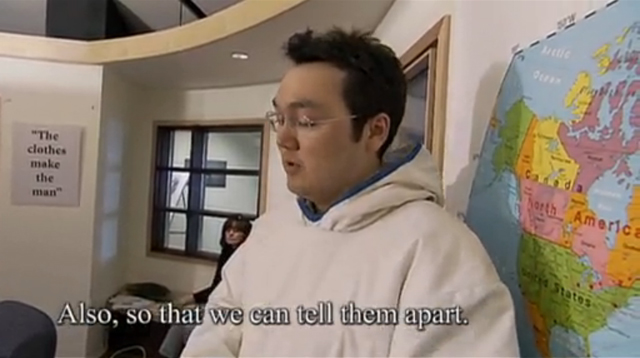
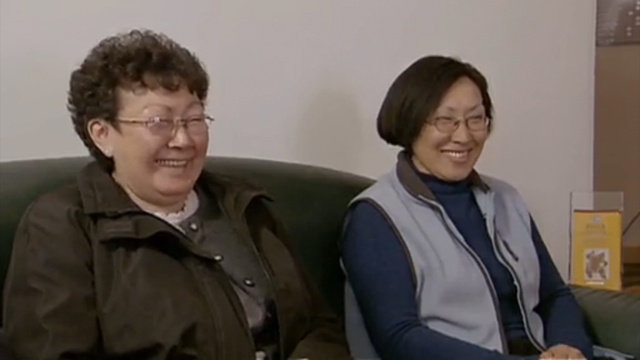
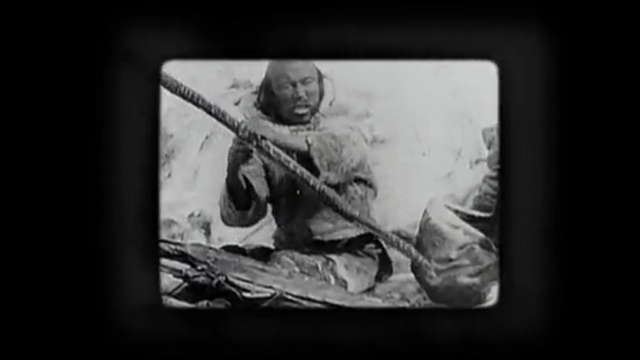
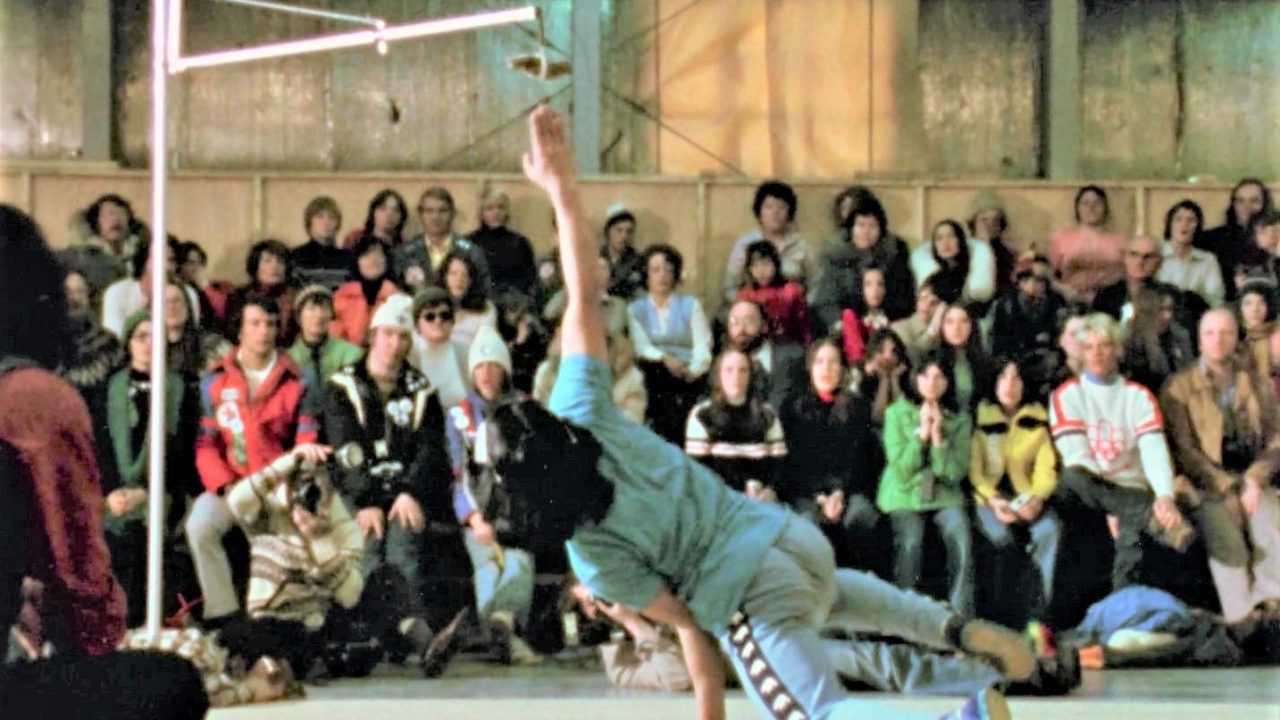

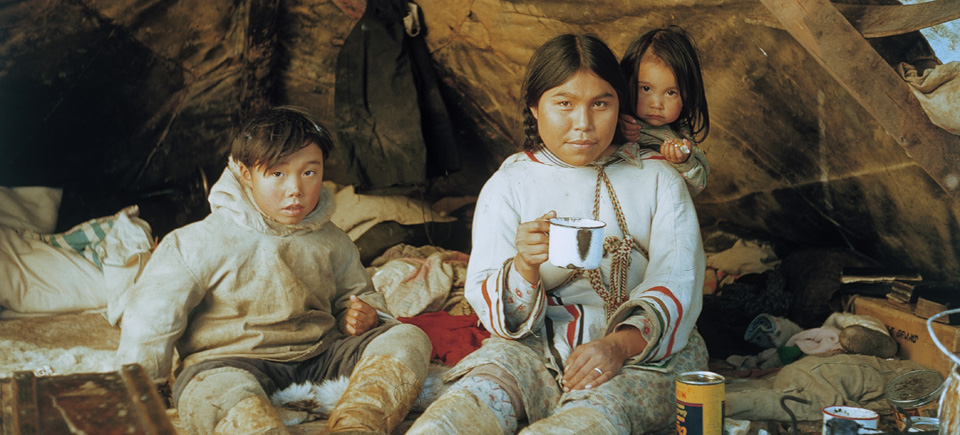

Excellent film. I love the whole concept of treating the colonists the way they treat us. Also I think it’s a great idea to study the euro-western colonists the way they study everyone else. I really enjoyed the film and found the “Book of wisdom for Eskimos” both extremely funny and also rather enraging.
Migwech/ thank you for making this film and sharing it.
This film truly depicts the white man’s disrespect for the aboriginal culture. The culture of the south can learn a lot from this film. The Eskimo culture is very down to earth, a culture that we as Canadians should embrace. this film is a job well done.
Worked as a nurse in Northern Ontario 42 years ago with the Federal Government. I always knew something was amiss, but now I get it! Thank You!!
Awesome! Thank you Innuit wisdom for Quallunot. Long time coming people! Long time coming!
Pete